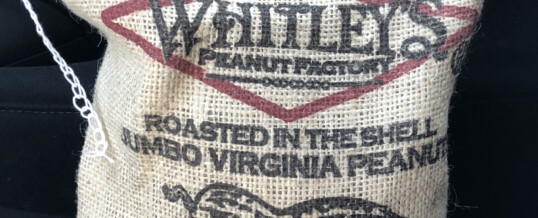
My father couldn’t pass a roasted peanut stand without stopping to buy a bag. He loved them.
Canton, Texas, has one of the largest flea markets in the world. During the late 1960s and throughout the ‘70s, my family frequented Canton. My father must have visited every peanut stand scattered throughout the grounds.
His favorite combination was a bag of hot roasted peanuts and a cup of ice cold, freshly squeezed lemonade.
His tastes were spot on. It really is a great combo.
My dad didn’t call them, “roasted peanuts.” In Arkansas, we called them, “parched peanuts.” I still do. Before being called a peanut, they were referred to as “groundnuts,” “goobers,” and in Great Britain, a “monkey nut.”
By any name, peanuts didn’t start out as people food in the US. One of their original uses was as food for pigs. It’s a great recipe – turning peanuts into bacon, but because peanuts had been part of the swine diet, folks were understandably slow to adopt them for their own consumption.
For the record, peanuts aren’t a nut, they are a type of legume. So, from a botanist’s point of view, they’re more like a bean than a nut. But, I digress.
Regardless of their scientific category, around a hundred years ago, most people didn’t want to be seen snacking on something that was thought of as farm fodder.
However, poor people ate what they had. And for many in the South, including my kin, they had peanuts. So began the slow path that peanuts had to travel to become a roasted treat for the masses.
My dad talked of parching peanuts on the wood stove when he was a kid. His fondness for parched nuts stayed with him until the end of his days. His affinity for parched peanuts was passed on to me.
When we weren’t in Canton, we could easily find peanuts other places and at other events.
They became an integral part of 20th Century America. Baseball games, circuses, and other American gatherings had peanut stands or a guy in a uniform and hat who walked around selling bags for a quarter.
Peanuts were also plentiful unroasted. The fall season was always special at the local feed store. The proprietor typically had a wood stove, where he’d throw raw peanuts in the shell on top of the cast iron surface and roast them for customers.
It was a brilliant marketing ploy. He knew the minute a kid smelled the roasting nuts; they’d start in on their parents to buy them a bag.
It worked.
It worked not only on the kids; it also worked on the adults. My dad would buy large, burlap sacks of unroasted peanuts and take them home to roast on a cookie sheet in our gas oven.
Mmmmm. That smell.
I remember my father putting several roasted peanuts, still in the shell, in the pockets of the jumpsuits he preferred and pulling one at a time out and cracking them open to eat as he drove us to a destination.
He always seemed to have just enough for every trip.
My dad liked peanuts so much that he and my mom grew them in the sandy soil of our garden behind our small, red brick house on Beech Street.
The sandy soil was just what they needed, because we had a bumper crop. Growing them ensured that my dad always had peanuts to roast when he wanted them.
I only remember them growing peanuts one season. My mom complained that they were messy. I’m guessing that it was easier to buy them, and peanuts were relatively inexpensive.
I don’t see roasted peanuts very often at concession stands these days. At least, not nearly as often as I used to. And that’s a shame.
Peanuts are good. And they bring back memories of youth. Aromas of a happy time, simple things, and good people.
Hearing of my affinity for roasted peanuts, my friend Denny surprised me with an early birthday bag of imported roasted peanuts.
They were imported from the Carolinas. When you’re from Arkansas, anything from far away is a big deal.
I’ve enjoyed snacking on them, but I long to roast my own. I checked with the local feed store and he said he’d have bags of unroasted peanuts in the fall.
I can’t wait. I have my wood stove and firewood ready.
I just need to make some lemonade.
©2020 John Moore
John’s books, Write of Passage: A Southerner’s View of Then and Now Vol. 1 and Vol. 2, are available on Amazon and on John’s website atTheCountryWriter.com. His weekly John G. Moore Podcast appears on Spotify and iTunes.
AUG
2020
